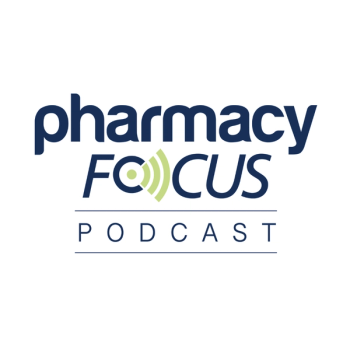
The Future of FDA Enforcement: How Artificial Intelligence Is Changing Drug Advertising Compliance
Pharmaceutical companies navigate FDA regulations and explore AI solutions to enhance compliance in drug advertising and enforcement.
In this Pharmacy Times interview, Edgar Asebey, Esq., FDA regulatory attorney at Frier Levitt, discusses how artificial intelligence (AI) could transform FDA enforcement and oversight of direct-to-consumer (DTC) advertising. He explains that as pharmaceutical advertising budgets have surged since the late 1990s, the FDA’s compliance responsibilities have grown while agency manpower has decreased, creating enforcement gaps. Asebey notes that the current administration is turning to AI-driven technologies to strengthen regulatory monitoring, streamline compliance reviews, and potentially issue automated warning letters. He adds that this shift could usher in a new era of proactive oversight within five years, compelling companies to tighten regulatory practices and ultimately improve consumer and patient protection.
Pharmacy Times: What immediate steps should pharmaceutical companies and their advertising partners take to stay compliant under the FDA’s evolving framework?
Edgar Asebey, Esq.: Well, I think all pharmaceutical companies have good FDA regulatory counsel. Like us at Frier Levitt, we have FDA regulatory attorneys who advise pharmaceutical companies, medical device companies, pharmacies, compounding pharmacies, etc. You have to rely on your counsel a bit and go back and say, “Okay, let's read that rule. What are those five components that we're supposed to be complying with? And let's look closely at what we plan to put out as advertisements and take a fresh look at what we should be doing pursuant to the 2023 final rule regarding direct-to-consumer advertising.”
I think that's step number one—working with your regulatory counsel to make sure that you are compliant with the rules as they are on the books right now.
Number two, look at your warning letters, if you've received one, and make a corrective action plan. You want a good relationship with the FDA—that’s your regulator—and therefore you have to take a stepwise approach. You have to understand what the alleged violation of the Food, Drug, and Cosmetic Act is, then develop a corrective action plan, and communicate that to the FDA within 15 days.
Right now, pharmaceutical companies and anyone who has received warning letters or untitled letters should be meeting with their counsel internally and working on how they are going to comply with the alleged deficiencies that are stated in their warning letter.
Pharmacy Times: Looking ahead, how do you see the intersection of AI, advertising, and federal oversight evolving over the next 5 years?
Asebey: You know, there’s a lot in that question. Because if we were just talking about AI and enforcement in any FDA category, I would say we’re going to see a sea change. Why? Because over the years, the FDA’s task has become bigger and bigger as companies become more creative.
Let’s use the example of direct-to-consumer advertising. Before 1997, it was primarily in medical journals and directed at doctors. After 1997, I think a 2021 study said that advertising budgets went up 800%—something like that—meaning there’s so much more the FDA has to do to monitor compliance.
What’s happened recently is that we’ve had a tremendous reduction in federal agencies, which means less manpower to undertake these tasks that are constantly growing for agencies such as the FDA. So how do you resolve the issue of less manpower but a bigger agenda or a bigger task of enforcement? Sending out 100 warning letters and up to 1000 untitled letters is no joke. That’s a lot of manpower, and there’s a lot of follow-up that has to happen.
So how does this happen when we have reduced manpower in the federal agencies? I think this administration is looking at AI as one of those solutions—using technology and the most advanced tools to make sure that companies are compliant with FDA rules, in this case, direct-to-consumer advertising.
I think we’ll see this develop in fits and starts over the next couple of years, but within five years, I think we’ll see a new reality of automatic warning letters being issued without necessarily having an FDA inspector or officer review an entire file. In the end, I think this will lead to better compliance. Companies will know they have to tighten up their regulatory practices.
As an FDA regulatory attorney at Frier Levitt, I can say there are plenty of sectors where clients come to me and say, “But all my competitors are doing this. Why are you telling me this is a violation of the Food, Drug, and Cosmetic Act?” And I tell them, “This is what the law says, this is what the regulations permit you to do, and here’s the level of compliance the FDA enforces.” In some areas, there’s just a very low level of enforcement actions.
That’s one of the things the current FDA commissioner is pointing out—when it comes to direct-to-consumer advertisements, there have been single-digit enforcement actions, sometimes only one or two per year, even as advertising vehicles continue to expand. Those don’t mesh. There should be more enforcement actions right now, and I think that’s why AI is being brought in.
It isn’t that the FDA is increasing its manpower by 50%; that’s not what’s happening. The FDA, like other federal agencies, has been reduced and is working with fewer resources. This may be the new reality—that technology can help federal agencies fill those gaps. Because enforcement, as an FDA attorney I can tell you, has gone down in many sectors, and we expect that to continue over the next couple of years. That’s not necessarily a good thing for the American consumer or the American patient.
Newsletter
Stay informed on drug updates, treatment guidelines, and pharmacy practice trends—subscribe to Pharmacy Times for weekly clinical insights.
























































































































































































































